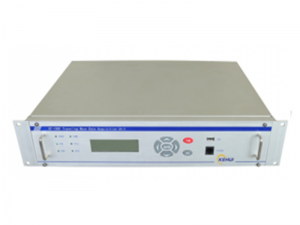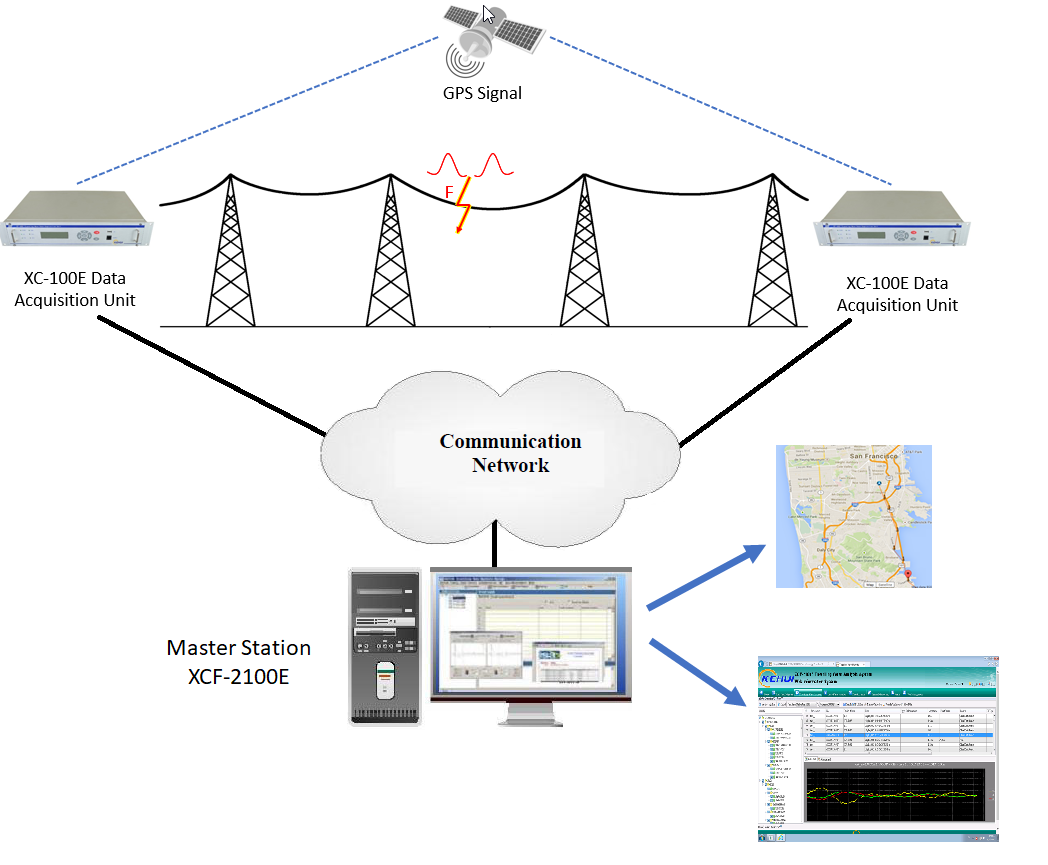XC-2100E Travelling Wave Fault Location and Monitoring System

Transmission systems are at the heart of the power network and their availability is essential to the reliability of the system. Monitoring the line can help the owner to optimise its maintenance programme to ensure that work on the line is correctly targetted at the most urgent issues.
The XC-2100E will allow the user to identify and locate events on the line, whether it is AC or DC, overhead, underground or a combination of the two. The most urgent issue on the line is a fault, but its integrity and operation may also be affected by the effects of lightning and deterioration in the performance of the circuit breaker, both of which can be monitored by this equipment.
When a fault does occur, it can be difficult to locate, particularly on long remote lines. Conventional fault locators work on the principle of measuring the impedance of the loop through which the fault current flows. In most cases, this includes a return path through the ground for which knowledge of the actual impedance is hard to obtain and is often estimated, leading to inaccuracies in the measurement of the distance to the fault. By utilising travelling waves, created when the fault occurs, the XC-2100E can measure the fault position independently of impedance and identify the fault point much more accurately.
The system provides accurate fault location solution for all transmission and distribution power lines, with each unit monitoring up to 8 lines. The fault distance measurement error is less than ±150m and is independent of line length and other factors which affect the fault location accuracy of traditional impedance measurement methods, including; line and earth return loop impedance, instrument transformer accuracy and uncertainty of zero sequence impedance due to variance of soil resistivity along the line corridor.
The use of travelling waves as the basis of the distance measurement, makes the XC-2100E system particularly suitable for cable systems. These can be underground cables, hybrid systems involving overhead transmission and cables, or underwater cables.
The XC-2100E consists of the travelling wave data acquisition unit XC-100E installed at the substation and the master station which analyses the data using software XCF-2100E. For accurate timing for the devices involved, the XC-2100E uses an internal GPS time synchronization module to provide an accurate time reference. The fault location can be mapped on to a Google Maps plot of the transmission line.

Travelling waves are also induced by natural phenomena such as lightning. The system will detect these and label them appropriately. If a lightning strike is made on the line itself, it may result in damage, even if there is no actual fault. Identification of the location of the event will allow it to be checked to see if any maintenance is necessary.
Normal operation of the circuit breakers will also generate travelling waves. The system will identify these events for what they are, but will also identify abnormalities, such as excessive difference in the operating time of the poles.
Such data can make an important contribution to the overall picture of the condition of the line, adding to the primary function of fault location in monitoring the line’s condition.


